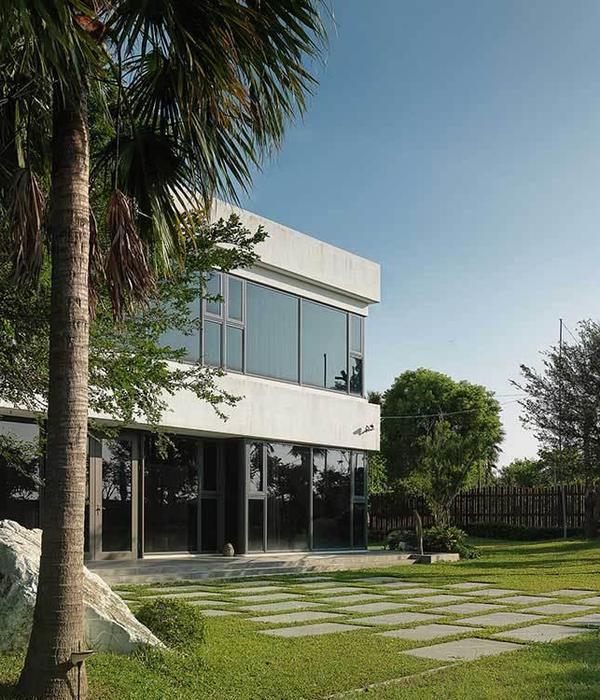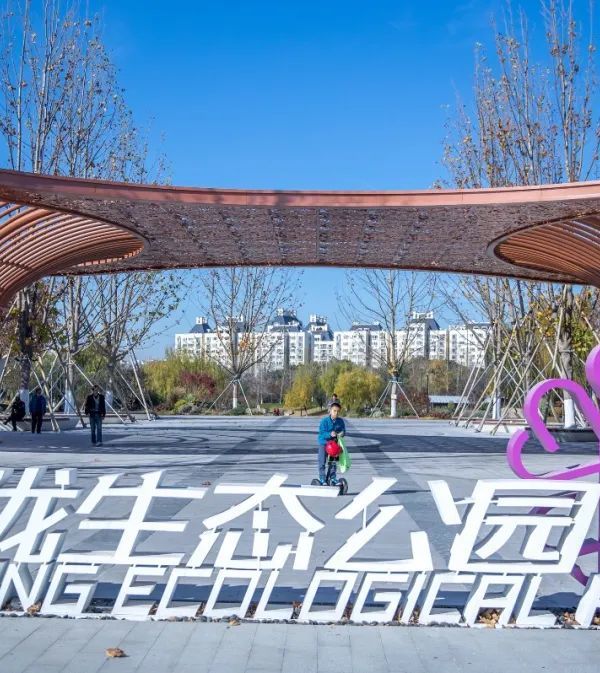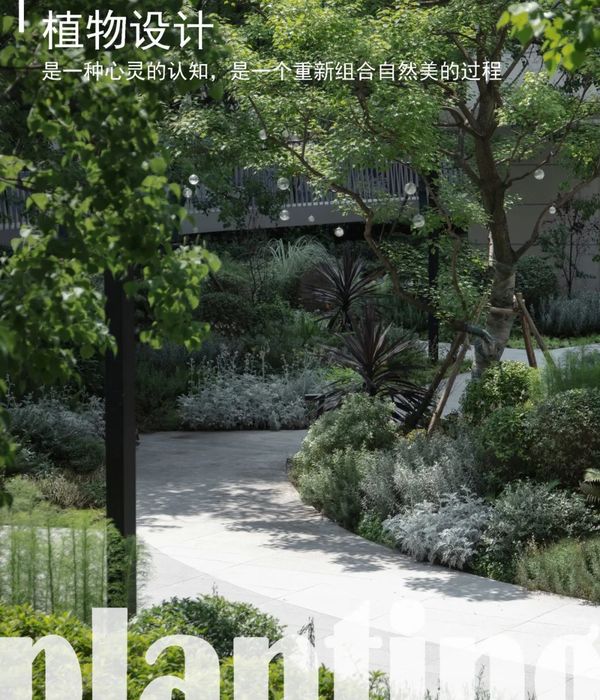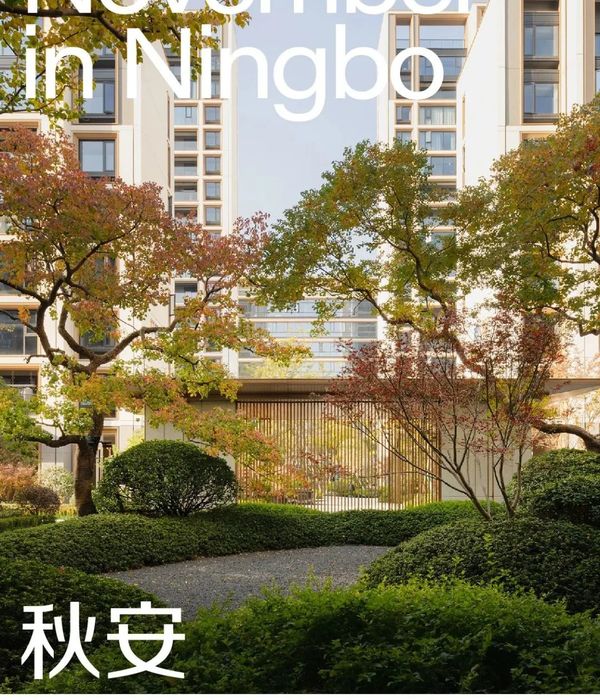“中国长城是世界最重要的文化资源之一。然而,这座古老的宝藏正面临着一系列的挑战:当地环境恶化、旅游机会减少、以及周边社区陷入贫困等。基于对历史和文化的分析、广泛的公众参与和最新的实地调查,设计团队提出了本项目中这个258公里长的大同古长城遗址走廊总体规划,以实现古长城的复兴。该规划根植于当地的自然景观和非凡的文化遗产,着眼于大规模的生态修复和风景名胜区的建立,以期在促进旅游业发展的同时,从社区中复兴整个古长城区域。”– 2019评审委员会
"China’s Great Wall is one of the world’s most important cultural resources, but this ancient treasure faces the deterioration of the local environment, a decline in tourism opportunities, and impoverished adjacent communities. Based on historical and cultural analysis, widespread public participation, and field surveys using the latest technologies, this master plan for a 258 kilometer-long Datong Ancient Great Wall Heritage Corridor creates a blueprint for revitalization. Rooted in the region’s landscape and remarkable cultural heritage, the planning team has begun the process of significant ecological remediation, the establishment of scenic areas to anchor tourism development, and the rebirth not just of place, but of community."
– 2019 Awards JuryASLABLLA
Beijing Forestry University
项目概述PROJECTSTATEMENT
长城不仅是世界文化遗产,也是人类文明的瑰宝。大同古长城主要建于明朝(公元1368-1644年),尽管经历了沧桑巨变,但其主要部分一直保存到了今天。然而由于种种原因,这处文化遗产一直在遭受着侵蚀和破坏,其周边区域也正面临着生态环境恶化、旅游业停滞和居民贫困等问题。
本总体规划建造了一条长258公里、面积186平方公里的线性遗产走廊,可以实现遗址保护、生态修复、文化旅游恢复、乡村振兴等多重目标,将直接惠及其沿线的53万人。该总体规划充分发挥了文化遗产的经济价值,在保护与发展、文化与旅游、工业与生态等各个方面之间都取得了收益的平衡。可以预见的是,得益于古长城的保护和灵活发展,本项目所覆盖的区域都将会得到振兴。
The Great Wall is a world cultural heritage, and a treasure of human civilization. The Datong Ancient Great Wall was mainly built in the Ming Dynasty (AD 1368-1644), and despite of all vicissitudes over history, its main parts have managed to remain till today. However, for all kinds of reasons, this cultural heritage has been constantly subjected to erosions and damages, and its surroundings now face deterioration of ecological environment, stagnation of tourism and poverty of residents.
The planning has constructed a linear heritage corridor of 258km in length and 186km2 in area, which can realize relics protection, ecological remediation, cultural tourism, village revitalization and many other goals and would directly benefit people in the amount of 530 thousands along the route. The planning has fully invigorated the derived benefits of cultural heritages, brought a balance to the benefits in a variety of aspects of protection and development, culture and tourism, industry and ecology etc., It’s foreseeable that this particular area will be revitalized as a result of the protection and flexible development of the Great Wall.
总体规划:长城是世界文化遗产,也是人类文明的瑰宝。大同古长城文化遗产走廊的总体规划建设了一条长258公里、面积186平方公里的线性遗产走廊,可以实现遗址保护、生态修复、文化旅游恢复、乡村振兴等多重目标。Master plan: The Great Wall is a world cultural heritage, and a treasure of human civilization. The planning of Datong Ancient Great Wall Cultural Heritage Corridor has constructed a linear heritage corridor of 258km in length and 186km2 in area, which can realize relics protection, ecological remediation, cultural tourism, village revitalization and many other goals.
项目说明PROJECT NARRATIVE
项目背景
自古以来,大同就坐落在游牧民族和农业民族聚居地的交界处,长城便是由农业民族建立起的防御体系。不熟悉长城的人通常会认为它仅仅是一堵巨墙。但实际上,长城的功能比人们想象的要复杂得多。在明朝,长城是由用于防御敌人的围墙系统、用于情报传递的烽火台系统、用于驻军值班的部队驻防系统、和用于提供物资的驻军开垦系统组成的,是一个庞大而完整的防御系统。在修建和保卫长城的过程中,许多士兵、工人及其家属都在长城附近定居了下来,从而形成了一系列定居点。而随着来自于游牧民族的威胁的消退,长城也逐渐衰落。
所面临的的挑战
1. 遗址保护
2. 生态环境
3. 交通系统
4. 社会经济
规划过程
考虑到项目的规模和复杂性,北京林业大学风景园林规划设计研究院(BLLA)和北京林业大学专门组建了一个规划团队。该团队囊括了景观设计、GIS技术、生态绿化、水土保持、建筑设计、文化旅游、文化遗址保护等众多领域的专业人士。与此同时,当地的长城保护协会成员、植物学家和农业经济学家也建立了一个专家咨询小组,以便为规划团队提供必要的支持。
整个团队对大同古长城片区的历史资料进行了详细的研究,并在计划范围内进行了为期两个多月的、长2,000多公里的实地考察。结合无人机的航拍图像以及土地资源和林业信息的数据库,团队人员创建出一个详细的GIS数据模型。此外,团队还深入当地的村庄和社区,以便广泛收集当地人的意见。
规划策略
1. 遗产保护
1.1 核心保护区 长城及其相关遗址之外50米内的区域将由专门的管理和保护机构严格防护,并对具有潜在倒塌危险的长城遗址进行保护性的修复工作。
1.2 生态修复区 在核心保护区以北100米-500米内的区域内进行生态修复,以保护长城遗址免遭生态灾害。
1.3 旅游服务区 在核心保护区以南500米-1,000米内的区域内进行生态修复,并在此基础上增加风景区娱乐系统和全程的旅游基础设施,从而将人为活动对自然的影响降至最低。
1.4 发展协调区 在确保与长城的景观和特色相协调的基础上,将旅游服务区以南500米-1,000米内的区域作为发展协调区,以指导当地的农业升级和乡村旅游发展。
2. 生态修复
2.1 确定生态敏感区 使用GIS信息模型确定生态敏感区,同时结合遗产保护的影响因素,进一步缩小补救范围。
2.2 定义生态修复策略 本总体规划以当地的原生植被群落为蓝图,针对五类生态敏感区的自然特征制定了预定义的种植匹配模型,同时建立了低维护成本的植被群落,并为濒危物种提供了栖息地。
3. 方法的建立
3.1 资源选择与风景名胜区的确定 项目团队对长城沿线的文化遗址和自然资源按照等级进行了评估,最终确定了12个资源优质且集中的地区作为建设风景名胜区的重点。
3.2 旅游设施系统 总体规划计划建设一条全长255公里的观光路线和自行车道系统,将长城统一成一个有机的整体。绿色走廊将被布置在道路系统的外侧,不仅创建一个连续的休闲系统,还能够提供一个可以俯瞰长城的空间。
沿途将设立12个风景名胜区的服务中心,以便建立连续的旅游服务设施系统。服务中心可以提供多种服务如:停车、餐饮、住宿和旅游信息查询等。在建筑设计上,项目团队则充分考虑了建筑空间与长城在视觉上的联系,以打造适宜的服务空间。
3.3 风景名胜区的规划 在风景名胜区内,通过重建自然地形来恢复植被和建立旅游设施。建立包括观光步道、休闲娱乐设施和餐饮住宿空间等在内的景区服务和讲解系统,并配备导游人员和文化自然科学的科普设施。
在对生态敏感性、遗址分布、建筑适宜性和其他因素进行综合分析的基础上,充分考虑景区设施的布局、材料、颜色
▲振兴长城:大同古长城主要建于明朝(公元1368-1644年),尽管经历了沧桑巨变,但其主要部分一直保存到了今天。2017年,大同市政府提出了构筑古长城文化遗址走廊的构想。
Revitalizing the Great Wall: The Datong Ancient Great Wall was mainly built in the Ming Dynasty (AD 1368-1644), and despite of all vicissitudes over history, its main parts have managed to remain till today. In 2017, the Datong Municipal Government proposed the conception of building the cultural heritage corridor of the ancient Great Wall.
▲大同古长城的历史里程碑:自古以来,大同就坐落在游牧民族和农业民族聚居地的交界处,长城便是由农业民族建立起的防御体系。而随着来自于游牧民族的威胁的消退,长城也逐渐衰落。
Historical milestones of Datong Ancient Great Wall: Since ancient times, Datong sit at the boundary of nomadic peoples and agricultural peoples, and the Great Wall served as a defense system built up by agricultural peoples. With the fading of the threats posed by nomadic peoples, the Great Wall has gradually declined day by day as well.
▲挑战与目标:大同古长城遗址一直在遭受着侵蚀和破坏,其周边地带也正面临着生态环境恶化、旅游业停滞和居民贫困等问题。Challenges and goals: The Datong Ancient Great Wall heritage has been constantly subjected to erosions and damages, and its surroundings now face deterioration of ecological environment, stagnation of tourism and poverty of residents.
▲项目推广:成立了一个由许多相关专业的专家所组成的团队。该团队不仅在现场进行了详细的调研和数据收集,还深入村庄和社区以收集意见。Project promotion: A team of experts covering a number of related specialties was set up. The team conducted detailed investigation and data collection on the site, and went deep into villages and communities to collect opinions.
▲文化遗址的分部状况 – 以左云县为例:通过对古长城文化遗址的分析,项目团队发现优质的遗址大多分布在距长城1000米范围内的区域中,从而为确定遗址走廊的空间格局提供了依据。
Distribution status of cultural heritage——Zuoyun county as an example: Through the analysis of the cultural heritage of the Ancient Great Wall, it is found that the high class heritage is mostly distributed within the range of 1000m from the Great Wall, which provides a basis for determining the spatial pattern of the heritage corridor.
遗址保护:总体规划根据长城及附近五种文化遗址的分布和保护现状,将遗址保护区的空间格局划分为四个层次,以实现长城遗址的分级保护和开发。
Relics protection: Based on the distribution and conservation status of the Great Wall and the five types of relics nearby, the planning has divided the spatial pattern for ancient Great Wall heritage protection into four levels, so as to realize the graded protection and development of the Great Wall heritage.
▲生态修复 – 以左云县为例:总体规划确定了有效的集约化生态修复区,并以当地的原生植物群落为蓝图,不仅在修复区内建立起低维护成本的人工植被群落,更为所有动物提供了栖息地。
Ecological remediation——Zuoyun county as an example: A region for intensive and effective ecological remediation is determined. The planning takes local native vegetation community as blueprints, constructs artificial vegetation community requiring low-maintenance in area of ecological remediation, and provides habitats for animals in each community.
▲建立通路 – 确定核心区域:项目团队对长城沿线的文化遗产和自然资源进行了评估和分级,找到了12个资源集中的高质量区域。随后便以“为整个遗址走廊提供核心景点”为目标,对其进行重点建设。
Establishment of Approaches——Define the core area: The cultural heritages and natural resources along the Great Wall have been assessed and rated to determine 12 areas with concentrated high-quality resources as scenic areas for key construction as the core attractions of the entire heritage corridor.
▲旅游设施系统:总体规划计划建设一条全长255公里的观光路线和自行车道系统,将长城统一成一个有机的整体。灵活的绿色走廊将被布置在道路系统的外侧。沿途将设立12个风景名胜区的服务中心,以便建立连续的旅游服务设施系统。
Tourism facility system: A sightseeing road & bike lane system, 255km in total length, will be built to connect the Great Wall into an organic whole; a flexible belt-like green corridor will be constructed on the exterior; 12 service centers attached to the scenic areas will be set up along the road to create a continuous system of facilities for tourism services.
▲风景名胜区的规划 – 以德胜古城为例:为了保护长城的历史特色,项目团队认真考虑了风景名胜区内植被的恢复和旅游设施的建立。在对生态敏感性、遗址分布、建筑适宜性等要素进行了综合分析后,制定出一套对环境影响最小的方案。
Scenic area planning——Desheng fortress as an example: To protect the historical features of the Great Wall, the vegetation restoration and tourism facilities in the scenic areas have been carefully considered. Based on a comprehensive analysis on ecological sensitivity, relics distribution, building suitability and other elements, a set of minimum interference schemes is established.
▲风景区鸟瞰图 – 以德胜古城为例:通过恢复自然地形可以建立起地域性的植被群落。建立包括观光步道、休闲娱乐设施和餐饮住宿空间等在内的景区服务和讲解系统,并配备导游人员和文化自然科学的科普设施。Scenic area birdview——Desheng fortress as an example: Through recovery of natural topography, such vegetation community with unique regional features could be created. A system of scenic area services and interpretation will be built, consisting of sightseeing trails, tourist service centers, leisure & recreation, dining & accommodation and other service facilities, supplemented by tour guides, and popularization facilities for culture and natural science.
▲风景名胜区 – 以德胜古城为例:恢复了风景名胜区的生态环境。区域内所有服务设施的布局、材料、颜色和形式等都参考了长城及其周边地区的环境,从而与遗址区和谐地融为一体。此外,总体规划还引入了增强现实技术来重现长城的历史场景。Scenic area perspective——Desheng fortress as an example: The ecological environment of scenic areas is restored, and the layout, materials, colors and forms of all service facilities all come from the Great Wall and its surrounding areas and are blended in a low-key manner into the heritage environment. what’s more, the technique of Augmented Reality was introduced to reproduce the history scenes of the Great Wall.
▲工业指导:在政府的财政补贴和科研机构的支持下,考虑经营规模等因素,引导农村居民种植植被以增加产量和收入;引导村民发展民俗旅游,引进开发商以开展投资和商业经营,促使当地人摆脱贫困,过上富裕的生活。
Industrial Guidance: By means of fiscal subsidies from government, support by scientific research institution, operation of scales and so forth, rural people will be guided on the plantation to increase production yield and their income; villagers will be guided to develop folk tourism and introduce developers for investment and operation, in order to lift the local rural people out of poverty and make them better off.
现阶段取得的成果 – 生态修复:经过为期一年的建设,总投资2.14亿美元的生态修复项目已基本完工,总计在荒山、山涧、山谷和平原上种植了近1.5亿棵树木,为长城创造了一道美丽的生态屏障。
Current Achievements——Ecological Remediation: After a year of construction, the project of ecological remediation with a total investment of 214 million USD has been basically completed, nearly 150 million trees have been planted on barren mountains, ravines, valleys and plains, creating a beautiful ecological barrier for the Great Wall.
现阶段取得的成果 – 旅游设施体系:长城沿途的观光道路系统已经部分投入使用,部分景区也已经对游客开放。盛开的杏花和迷人的长城吸引了大批游客。可以预见的是,得益于古长城的保护和灵活发展,本项目所覆盖的区域都将会得到振兴。
Current Achievements——Tourism facility system: The sightseeing road along the Great Wall have been partially put into use, some scenic area have been opened to tourists, the blooming apricot flowers and the charming Great Wall have attracted a large number of visitors. It’s foreseeable that this particular area will be revitalized as a result of the protection and flexible development of the Great Wall.
PROJECT NARRATIVEBACKGROUND
Since ancient times, Datong has sat at the boundary of nomadic peoples and agricultural peoples, and the Great Wall served as a defense system built up by agricultural peoples. People who are unfamiliar with the Great Wall usually take it as a giant wall; in fact, it’s much more complicated beyond imagination. In the Ming Dynasty, the Great Wall consisted of a wall system against enemies, a beacon-fire tower & postal delivery system for intelligence transmission, a troops stationing system for garrison duty, and a garrison reclamation system for furnishing supplies; it was a huge and complete defense system. In the process of constructing and defending the Great Wall, numerous soldiers, laborers, and their families settled down near the Great Wall and formed many settlements. With the fading of the threats posed by nomadic peoples, the Great Wall has gradually declined day by day as well.
CHALLENGES1. Relics protection2. Ecological environment
3. Approach to the heritage
4. Social economyPLANNING PROCESS
Considering the large scale and complex conditions of the project, we have built a planning team consisting of Landscape Architecture, GIS, Ecological Afforestation, Conservation of Water & Soil, Architecture, Cultural Tourism, Cultural Relics Protection, among many other specialties, and hired members of local Great Wall protection associations and experts in botany and agro-economics to establish an advisory panel of experts.
The team have conducted detailed studies on historical materials, and carried out field surveys within the scope of planning for a duration of above two months and over a journey of above 2,000km. In combination with aerial images and land shot by UAV and databases of land resources and forestry information, the team have created a detailed GIS data model. What’s more, the team went deep into villages & communities, the opinions of the local people were widely collected.
PLANNING STRATEGIES1. RELICS PROTECTION
1.1 Core protection area An area of 50m in width outside the Great Wall and its associated heritages will be strictly protected by a special management and protection institution, and relics with the potential hazard of collapse will be provided with protective restoration.
1.2 Ecological remediation area An area of 100m-500m in width to the north of core protection area will be provided with ecological remediation to protect the Great Wall heritage against ecological disasters.
1.3 Tourism service area An area of 500m-1,000m in width to the south of the core protection area will be provided with ecological restoration, and added with scenic area recreation system and whole-route tourism infrastructure with minimized interferences.
1.4 Development coordination area An area of 500m-1,000m in width to the south of the tourism service area will be designated to guide agricultural upgrading and develop village tourism on the basis of guaranteeing coordination with the landscape and features of the Great Wall.
2. ECOLOGICAL REMEDIATION
2.1 Defining of Ecological remediation strategies Adopting local native vegetation community as blueprints and targeting the natural characteristics of five types of ecologically sensitive areas, the planning has predefined matching models of planting, constructed basically vegetation community requiring low-maintenance and provided habitats for endangered species.
3. ESTABLISHMENT OF APPROACHES
3.1 Selection of resources and determination of scenic areas The cultural heritages and natural resources along the Great Wall have been assessed by grades and rated to determine 12 areas with concentrated high-quality resources as scenic areas for key construction.
3.2 Tourism facilities system A sightseeing road & bike lane system, 255km in total length, will be built to connect the Great Wall into an organic whole; a green corridor will be constructed on the exterior to create a continuous recreation system, where full consideration will also be given to the overlooking relation with the Great Wall.
12 service centers attached to the scenic areas will be set up along the road to create a continuous system of facilities for tourism services. On top of service centers, there are a variety of services such as Parking, dining, accommodation, and information enquiry for tourism to be configured. Cautious consideration has been given to the visual relation with the Great Wall in the architectural design of each service.
3.3 Scenic area planning In the Scenic area, through the recovery of natural topography, the vegetation restoration and tourism facilities in the scenic areas have been carefully considered.
A system of scenic area services and interpretation will be built, consisting of sightseeing trails, leisure & recreation, dining & accommodation and other service facilities, supplemented by tour guides, and
{{item.text_origin}}












